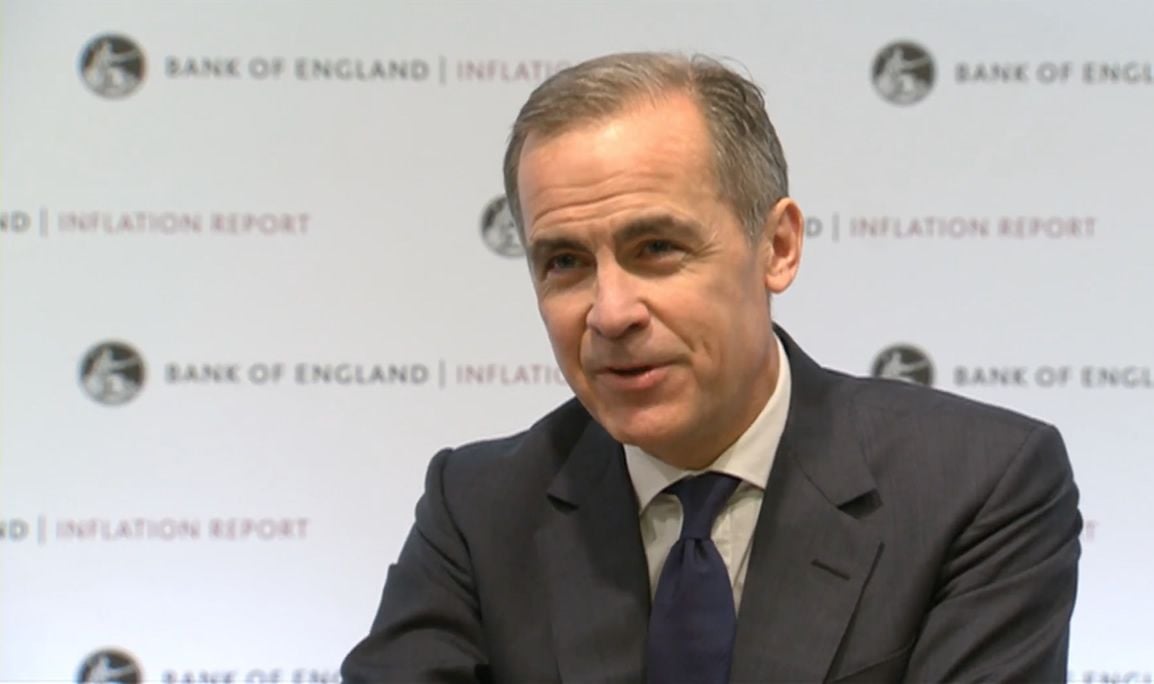Bank of England Flags Recovery in UK Retail Sales as Haldane Talks Rate Hikes
- Written by: James Skinner
-BoE agents say retail sales recovered in second-quarter.
-BoE Agents anticipate sales growth of around 3% in year-ahead.
-Data suggestive of an economic rebound as Haldane talks rate hikes.

© Pound Sterling Live, Bank of England
UK retail sales have risen during the second-quarter and are forecast to expand by a decent clip throughout the rest of 2018, according to the Bank of England (BoE), although the recovery from an earlier first quarter slump is still fragile and has been influenced most by a marked improvement in the weather.
The latest Agents' Summary of Business Conditions, which details results from surveys of the BoE's regional agents in the UK, shows warm weather throughout the April and May months has seen spending on goods across the high street rise this quarter. Seasonal clothing and footwear sales were among the greatest contributors to growth.
However, spending on new cars, white goods and other home items remained weak and demand for consumer services in the travel, tourism and hospitality sectors has slowed during the same period, leaving the retail sectors overall recovery with a tepid appearance.
Economists care about retail sales because they are a leading indicator of broader economic growth and markets care because of the influence that rising or falling consumption can have on inflation. It is inflation the BoE is attempting to contain when it raises interest rates and rates themselves are the raison d'être for most moves in exchange rates. It is this latter aspect that also makes the BoE Agents' survey important for Pound Sterling.
"There had been a tick up in retail sales growth, helped by stronger sales of seasonal clothing and footwear. However, this was not sufficient to fully make up for sales lost due to the adverse weather in Q1. There was ongoing weak demand for new cars, white goods and homewares," the Agents' Summary says.
Consumer services companies responding to the BoE survey said weak sales growth was likely the result of cautious consumer sentiment, squeezed "real incomes" and higher pensions auto-enrollment contributions. Political uncertainty, delays in welfare payments and welfare sanctions also feature as headwinds for some companies.
"Overall, the results indicated that there had been a significant drop in sales volumes in Q1 due to the adverse weather, with lost sales likely to be only partially recovered in subsequent quarters. However, improvements in consumers’ real disposable incomes and in confidence were both expected to boost volume growth in the year ahead, in contrast to the survey results from 2017," the BoE says.
The Bank of England says that its "contacts" expect sales volume growth of around 3% on average in the year ahead, which chimes broadly with data from the Office for National Statistics, albeit understating the April-May recovery.
ONS data shows UK retail sales grew by just 0.1% during January and fell by an upwardly-revised 1.1% during March, after high street spending was hampered by a fortnight of adverse weather spanning the end of February and beginning of March. However, spending then rose by 1.8% in April and 1.3% in May, with all main sectors of seeing an increase in sales.
This drew a definitive line under the contraction seen in March, which is important for broader UK economic growth given that private consumption is estimated to account for anywhere between 50% and 70% of output from the overall economy. UK economic growth slowed from 0.4% at the end of 2017 to just 0.1% in the first-quarter and much rests on whether activity has picked back up during the three months to the end of June.
The first-quarter economic slowdown, and a steep decline in UK inflation, led the BoE to abandon the idea of an interest rate rise in May, which dented the Pound and left markets looking to the August meeting for the next possible move. Economic data for June, the final month of the second-quarter, will be released throughout July and early August with just enough time for BoE rate setters to gauge the strength of the rebound.
"I would have voted to raise Bank Rate at the MPC’s May meeting had data on the economy held firm. What we saw ahead of that meeting was a string of weak data suggesting consumer spending might be faltering," says Andy Haldane, chief economist at the BoE and a member of the Monetary Policy Committee (MPC), in a speech Thursday. "I believed there was option value in waiting to see if these data signalled the start of a lasting retrenchment by households, or were instead a temporary snow or statistical blip."
Haldane was one of three MPC members to have voted in June for an increase in the UK's main interest rate, after eschewing such a decision in May. Many economists now expect the Bank of England will go ahead and raise rates in August, although financial markets have been slow to take note.
Sterling-Overnight-Index-Average pricing on the morning of Thursday 28 June implied and August 02 Bank Rate of 0.59%. If markets were as confident in the likelihood of an August rate rise as Andy Haldane appears to be in the merits of one then that implied rate would be closer to the 0.75% the actual Bank Rate will sit at the next time the BoE pulls the trigger.
If and when financial markets become more willing to bet on an August interest rate rise then this implied rate will rise further, and the Pound with it. Sterling traded at 1.3104 against the Dollar Thursday and was down 2.89% for 2018. The Pound-to-Euro rate was at 1.1303 and up only 0.47% for the 2018 year.
Advertisement
Get up to 5% more foreign exchange by using a specialist provider to get closer to the real market rate and avoid the gaping spreads charged by your bank when providing currency. Learn more here



